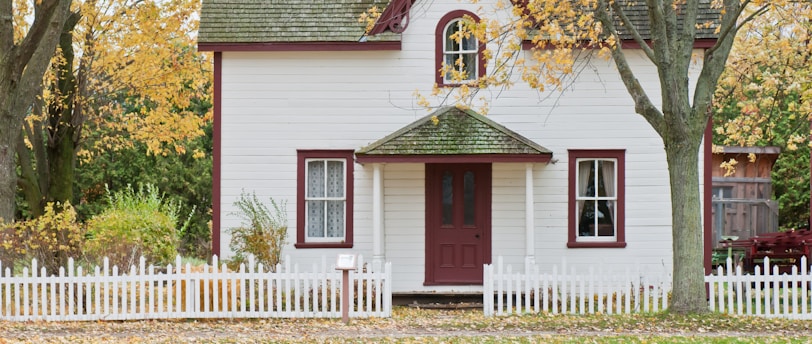The Key to Pricing in the Single-Family and Multifamily Rental Market
Tips and tricks to ensure home and apartment owners don't miss out on securing a good tenant quickly.
Adam Eckstein
3/16/20253 min read


The Key to Smart Pricing in the Long-Term Rental Market
For landlords and property managers, pricing a 12-month lease is one of the most important financial decisions you make. Yet, too many owners stick with outdated rent comps, fail to adjust prices quickly enough, and ultimately lose money due to costly vacancies.
The truth is: every day your property sits empty, you’re losing revenue that you’ll never recover.
At Rental Price Pro, we specialize in strategic, data-driven pricing to help landlords minimize vacancy losses and maximize rental income—whether you’re listing a new unit or setting renewal rates.
Why Most Landlords Lose Money on Pricing
Most long-term rentals operate on fixed 12-month leases, meaning you only get one opportunity per year (at most) to set the correct price. Unlike short-term rentals that have dynamic pricing tools, long-term rental pricing requires a proactive strategy to avoid costly mistakes.
The two biggest pricing errors landlords make:
❌ Not adjusting pricing fast enough – A home sitting vacant for 30+ days can cost thousands in lost rent. Waiting too long to reduce rent can be more expensive than a quick, strategic price adjustment.
❌ Setting renewal rates too low (or too high) – Failing to price renewals correctly can either cause unnecessary tenant turnover or leave money on the table by not keeping pace with market trends.
How to Optimize Rental Pricing for 12-Month Leases
1. Price Your Listing for Speed, Not Just Profit
Many landlords price their rentals too aggressively at first and only adjust when weeks of vacancy have already passed. This is a costly mistake.
Instead, focus on fast market absorption:
✔ Set an initial price based on real-time demand — not just past rental comparables.
✔ If there’s no serious interest in 10-14 days, adjust quickly to avoid prolonged vacancy.
✔ Track days on market in your area — if similar rentals are moving in 2 weeks and yours isn’t, it’s time to adjust.
A $100 price drop after two weeks of vacancy is often better than losing a full month’s rent by holding out too long.
2. Set Renewal Rates That Retain Tenants & Maximize Revenue
Most landlords either:
➡ Raise rent too aggressively and drive good tenants away.
➡ Fail to raise rent at all, missing out on market gains.
Instead, take a data-driven approach:
✔ Compare in-place rents to new lease rates — if the market is up 8%, don’t settle for a 1% renewal increase.
✔ Factor in vacancy risk — losing a tenant over a small rent increase could cost more in lost rent and turnover costs than you would make in additional revenue.
✔ Use lease timing to your advantage — shift expirations to peak rental months to optimize future pricing. Asking for a 15 month or another non-traditional length lease can help position you next lease start date during higher priced months in the spring or early summer.
3. Adjust Pricing Faster to Avoid Vacancy Losses
Many landlords set a price and then wait 30+ days before adjusting, losing valuable rental income. Instead, use a tiered discount strategy, to ensure you move quickly.
🚀 Days 1-10: Start with an aggressive but competitive price.
🔍 Days 11-20: If no strong activity, adjust price downward slightly to drive interest. Based on our experience, the average home needs around 10 showings to sign a lease. So if you want to rent your home out in 30 days, you should be attracting at least 2-3 showings each week. If the traffic is less than this, you may need to drop the price.
📉 Days 21-30: Make a final adjustment to secure a tenant before the property sits empty another month. Discounts can be in the shape of "first week free" or other non-rate adjustments that can encourage tenants to sign your lease.
Each vacant month costs 8.3% of your annual income—adjusting pricing quickly prevents unnecessary losses.
4. Timing is Everything: List at the Right Time
Rental demand fluctuates seasonally, and landlords who ignore this end up with longer vacancies and lower rents.
Peak rental demand = Spring & Summer (April-August)
Slowest rental demand = Winter (November-January)
If possible, align lease expirations with high-demand months by offering slightly shorter or longer lease terms.
Example:
✔ If listing in December, offer a 15-month leases to move expirations into a peak rental period.
✔ If a tenant’s lease expires in May, prioritize a 12-month renewal to keep your rental turnover in a strong seasonal period.
5. Don’t Rely on Automated Pricing Tools for Long-Term Rentals
Most pricing tools (like those for short-term rentals) don’t work for the long-term rental market. Here’s why:
🚫 Not enough data – Short-term rentals have 10-20x more data points per unit due to frequent turnover. Long-term rentals only have one lease per year, making automated pricing models unreliable. Even Zillow's "Zestimate" can be quite inaccurate due to the lack of rentals data in your neighborhood.
🚫 Lack of seasonality adjustments – AI pricing engines don’t fully account for the unique demand cycles of annual leases.
🚫 No consideration for renewal pricing – Retaining a great tenant often requires a different pricing strategy than securing a new lease.
At Rental Price Pro, we provide human-driven, expert pricing analysis tailored for long-term rentals—ensuring optimal pricing for new leases and renewals.
Ready to Increase Your Rental Revenue?
Don’t leave money on the table! Submit an Inquiry and let us show you how to optimize your pricing for maximum returns.
Solutions
Customized pricing strategies for maximizing rental revenues.
Contact
Need Help?
contact@rentalpricepro.com
© 2025. All rights reserved.
